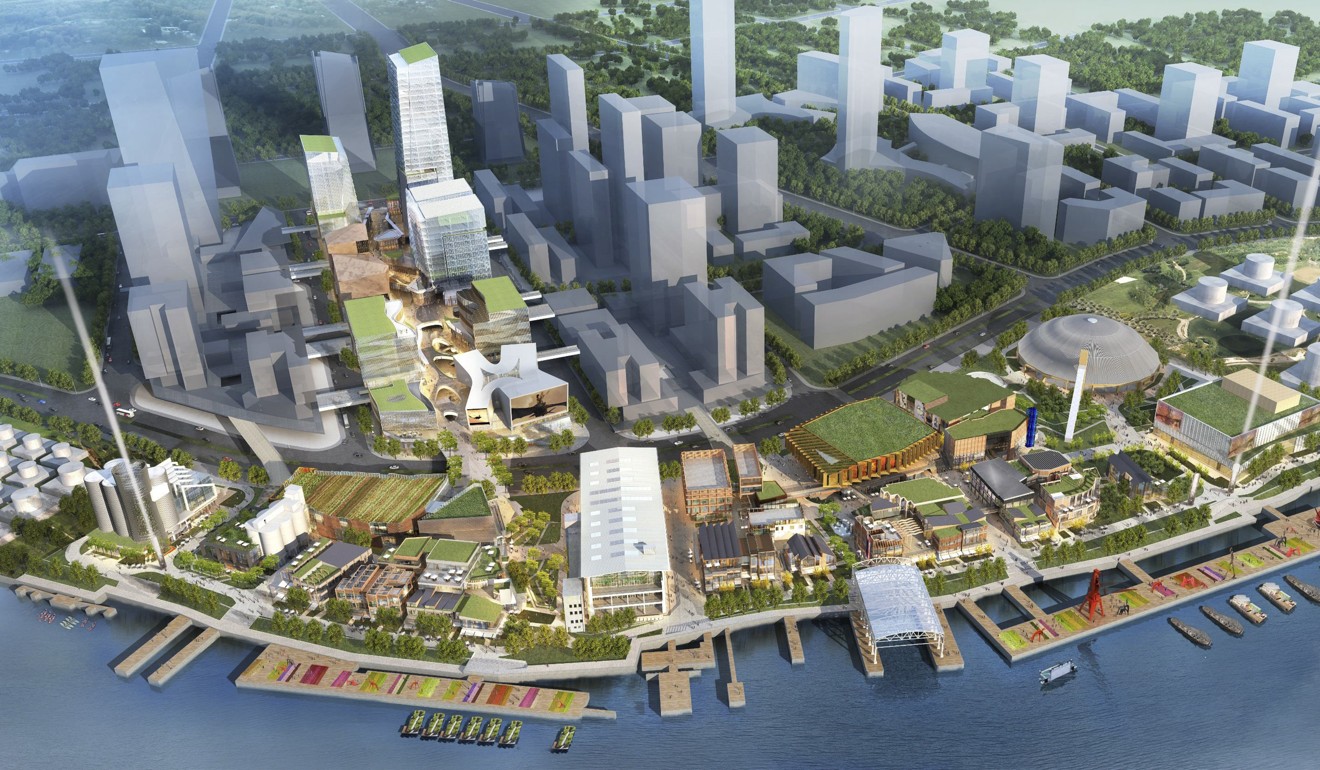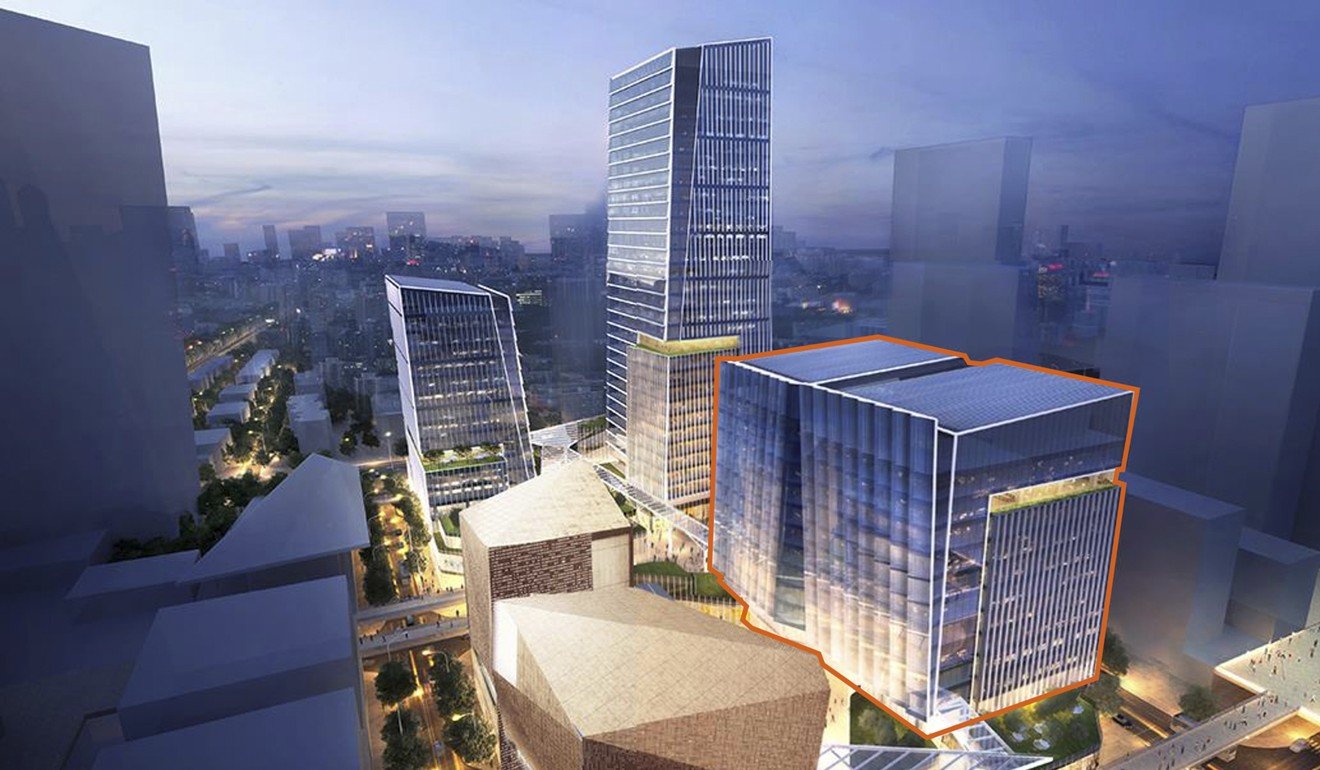
DreamWorks out of the picture at Shanghai DreamCenter – what now for the ambitious project?
Remaining investors including China Media Capital and Hong Kong’s Allan Zeman say business and cultural development is on track
Things haven’t worked out as planned at the Shanghai DreamCenter.
DreamWorks Animation, intended to be the star attraction at the multibillion-yuan business and cultural development beside the Huangpu River, is out of the picture.
The project’s remaining partners insist the DreamCenter remains on track, despite the departure of the animation powerhouse, creator of cartoon blockbusters Shrek, Madagascar and Kung Fu Panda, which is reportedly re-evaluating its activities in China.
Hong Kong-based businessman Allan Zeman, whose Lan Kwai Fong Group became a key player in the project in 2014, says DreamWorks is no longer actively involved, but work is ongoing.
“The ‘Dream’ in DreamCenter doesn’t necessarily have to do with DreamWorks. You have the China Dream, too. It just so happens that DreamWorks was there when we named it. It’s a good name so we will keep it,” Zeman says.
DreamWorks founder Jeffrey Katzenberg had been a high-profile champion of the project since he and Li Ruigang, chairman of China Media Capital group, unveiled plans in 2012 for the cluster of grade A office buildings, cinemas including an Imax multiplex, and retail and entertainment venues in Shanghai’s fast-developing West Bund area.
Shanghai Dream Centre reflects the city’s new ambitions of creating cultural highland
He boasted in 2014 that the DreamCenter would rival New York’s Broadway and London’s West End when it opens in 2018, and become “the heart of Shanghai”. Oriental DreamWorks, the film production and distribution joint venture Katzenberg’s company set up in 2012 with Li’s group, Shanghai Media Group and Shanghai Alliance Investment, would have a custom-built headquarters there and host star-studded premieres at the X-shaped multiplex, bringing Tinseltown glamour to the former cement factory site.
DreamWorks’ collaborations with China Media Capital, a state-backed private equity group that targets international media, entertainment and sports assets, epitomised the love affair between China and the US film industry, fuelled by the former’s desire to spread its soft power through popular culture, and Western studios’ ambition to reach a wider audience in the world’s second-biggest film market.
The ‘Dream’ in DreamCenter doesn’t necessarily have to do with DreamWorks. You have the China Dream, too
Oriental DreamWorks, which released Kung Fu Panda 3 last year, had plans to make two or three films a year designed to appeal to both Western and Chinese audiences once it moved into its new riverside abode. But then Katzenberg sold DreamWorks.
In April 2016, US telecoms giant Comcast offered US$3.8 billion for the Nasdaq-listed studio – a 27 per cent premium to its then share price – and in August, DreamWorks was folded into Comcast’s Universal Filmed Entertainment Group. A year on, Katzenberg has stepped down as DreamWorks’ chief executive, and neither Comcast nor China Media Capital have commented on how this will affect the China joint venture. The companies have also not denied a March report in Variety magazine that Comcast was in talks to sell DreamWorks’ 45 per cent stake in Oriental DreamWorks.

“I am not able to disclose too much at the moment. What I could only share with you is that things are not as negative as some media imagine. In fact, a new milestone is ahead of us,” Li says in an email to the Post. Comcast’s press office has not responded to repeated requests for comment.
Zeman says: “[DreamWorks] weren’t really involved on a day-to-day basis from the beginning, so this hasn’t really changed anything at the Shanghai DreamCenter.”
Even without DreamWorks, China Media Capital should have no trouble lining up red-carpet events. It has a production joint venture with Warner Bros and Creative Artists Agency, which represents A-list stars including Brad Pitt, Tom Cruise, Julia Roberts and Julianne Moore.

DreamCenter is more than just a commercial venture. It is designed to attract foot traffic and investment to a new business area created by the Xuhui district government called the West Bund Media Port. Together with the adjacent West Bund Cultural District, it’s hoped it will help drag the centre of gravity towards the less developed southwestern part of China’s financial capital. There are plans for a light railway to link it to the Bund.
The site is a T-shaped plot with the wider end facing the river. At a little over 15 hectares, its footprint is just 38 per cent of the surface area of Hong Kong’s embryonic West Kowloon Cultural District, but will have about half its gross floor area due to extensive use of underground space.
China’s king of clubs to open art centre in disused oil tanks in Shanghai
The waterfront “cultural” area will be dominated by a vast Dream Dome – a multi-purpose performance space (for pop concerts, sport, award ceremonies, etc) occupying a renovated concrete factory that will seat 3,000 people. Next to it are three theatres that will seat 700 to 1,800 people, with the biggest designed for Broadway-style musicals.
The area will have its own Lan Kwai Fong with restaurants, bars and shops to attract Shanghai’s young and trendy crowd. The even younger can hang out at the large “Family Entertainment Zone”, where the repurposed concrete silos will be used for games and arts-related activities.
Farther from the water, a large, X-shaped multiplex with nine screens will be the main feature of “Star Plaza”, which the investors envisage hosting film premieres and awards ceremonies attended by Western and Chinese movie stars. The rest of the area comprises an art and design centre with galleries, a black box theatre, two commercial high-rises, retail outlets and a stand-alone building still labelled as Oriental DreamWorks’ headquarters.

Other large Chinese technology and media companies, such as Tencent and Hunan Television, have promised to build new offices in the West Bund Media Port, while Hong Kong’s Henderson Land has bought three plots of land there and is building a 280-metre commercial tower.
“The 2010 Shanghai Expo kicked off the redevelopment of industrial land along the Huangpu River,” says Wang Jun, assistant professor of urban studies at the City University of Hong Kong.
You need to create a reason for people to want to go there
In 2014, the Long Museum and Yuz Museum became the first private museums to open in the West Bund Cultural District, Wang says. Then waterfront residential development began, followed by office blocks.
The cultural elements give the West Bund a distinct identity, she says, helping it compete with other new business districts springing up in Shanghai, such as the East Bund area being built by the Pudong government on the other side of the river.
Lau Chun-kong, the Asia head of valuations advisory services at JLL and former president of the Hong Kong Institute of Surveyors, recently visited the area and he says the cultural aspect is vital to developers’ plans to brand it as “liveable”.
“You need to create a reason for people to want to go there, and the Xuhui government wants to attract more people to work and live there, to make other Shanghai districts envious and to have enough tax income for sustainable development,” Lau says.
So how does DreamWorks’ retreat affect the project? Financially, Li and Zeman say, there is no impact. It was never clear how much DreamWorks was going to invest in the centre. Oriental DreamWorks, the film production joint venture, was registered in the Cayman Islands in 2013 with cash and non-cash capital worth US$330 million, but funding for the DreamCenter – estimated to cost 12 billion to 14 billion yuan – is a separate, undisclosed deal.
Apart from LKF Group, which was brought on board in 2014 for its experience in construction and managing entertainment and business leasing, China Development Bank is another major investor. “The bank has invested a big amount so they are also involved in our weekly Tuesday meetings to follow progress,” Zeman says. He declined to say how much each party has injected into the project, citing confidentiality.

Wu Jiaming, China Media Capital’s spokeswoman, says Oriental DreamWorks is “doing well” despite Comcast’s reported intention to sell its stake. Everest, its second film, is on track for a 2019 release, she adds. The company would not confirm whether Oriental DreamWorks is still moving into its slated DreamCenter headquarters, but Li says his company still has strategic plans for its animation business.
Construction at the site was going ahead when the Post visited at the end of March, with many key buildings taking shape. Zeman says the grand opening will go ahead in the third quarter of 2018.
But it remains to be seen what kinds of show it will bring to the numerous performance venues, especially now Shanghai has a dedicated theatre for musicals – the Shanghai Culture Square, which opened in 2011.
“We are working on the programme intensively now. It is one of China Media Capital’s key responsibilities and our core competence,” says Wu. One of the company’s backers, Shanghai Media Group, is an investor in the Chinese version of Mamma Mia! the musical.
Zeman says given the size of the DreamCenter project, LKF Group will probably have to wait seven to 10 years to recoup its investment, but he is optimistic about the West Bund area’s prospects.
“In China, if you have a dream and want to make something happen, as long as you can mobilise the key companies and have the manpower, you can go right ahead,” he says.
Editor’s note: The headline on this story was changed on May 4 to remove a reference to Allan Zeman. The summary was amended to remove a reference to remaining DreamCenter investors “putting a brave face on” DreamWorks’ exit from the project. On May 5, the word “actively” was added to the fourth paragraph of the story.

